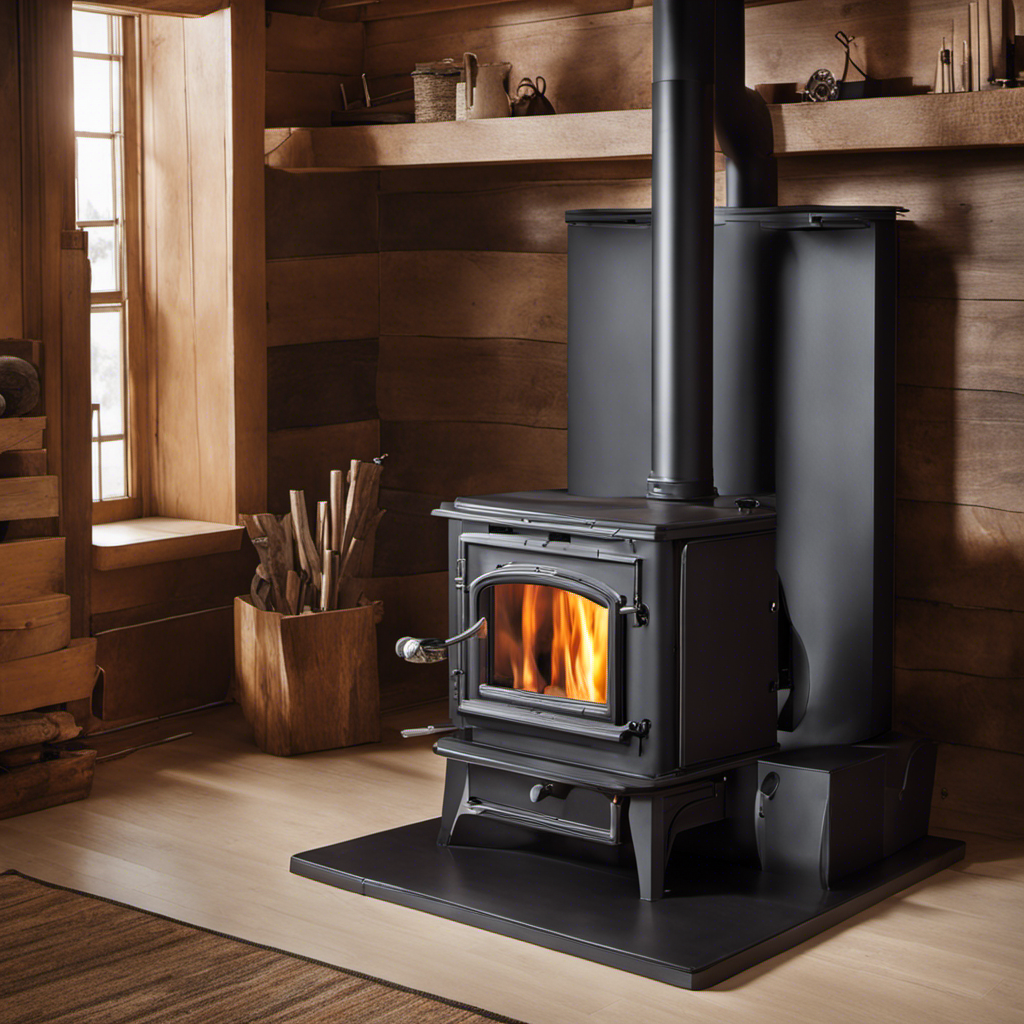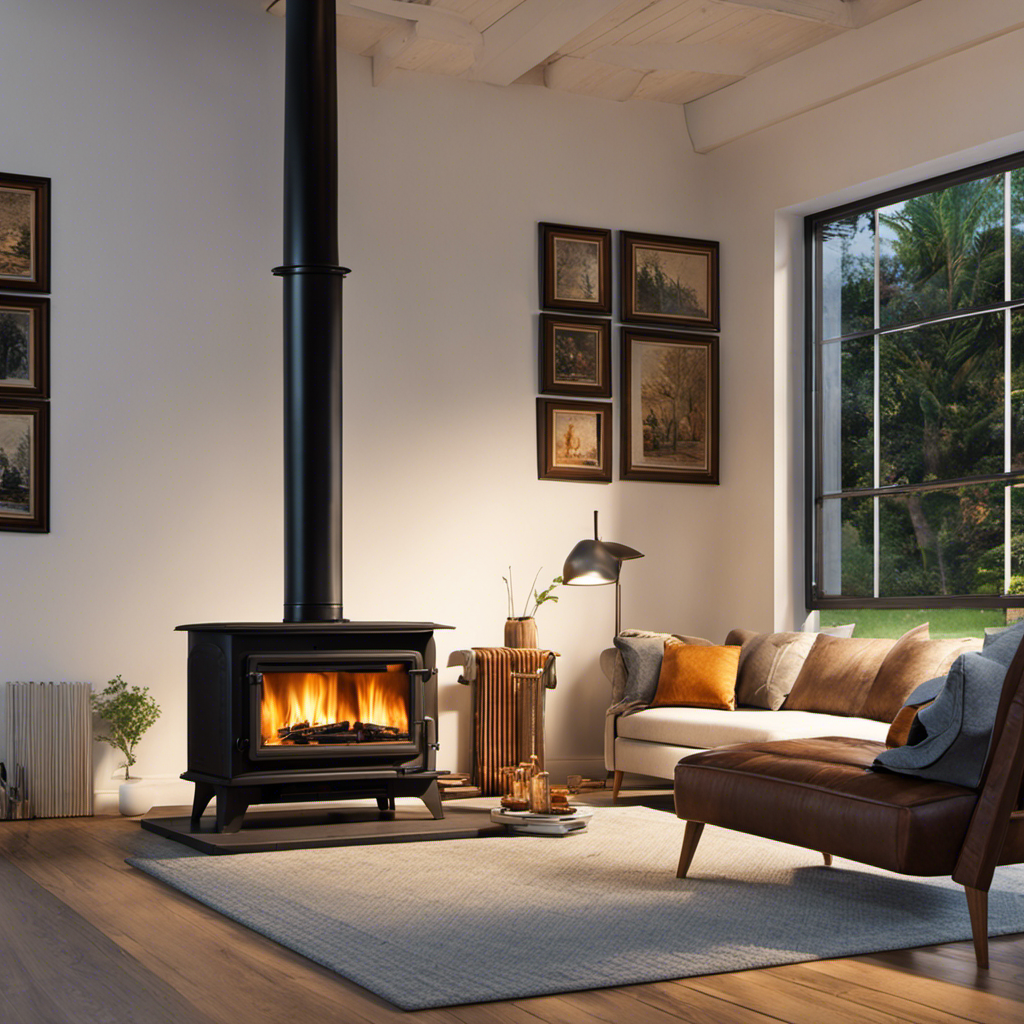I have always been impressed by the longevity of catalytic converters in wood stoves. These compact devices work tirelessly to lower emissions and enhance the efficiency of our wood stoves.
But just how long should they last? In this article, I’ll dive into the factors that affect their lifespan, the signs that indicate it’s time for a replacement, and some helpful tips to extend their longevity.
So, let’s get cozy and explore the world of wood stove catalytic converters together.
Key Takeaways
- Regular cleaning and maintenance are crucial for extending the lifespan of a wood stove catalytic.
- Signs indicating the need for replacement include decreased heat output, increased smoke emissions, soot buildup, and difficulty igniting or maintaining a fire.
- On average, a wood stove catalytic lasts around 10-15 years, but this can vary depending on usage and maintenance.
- To extend the lifespan of a wood stove catalytic, use high-quality dry wood, monitor temperature to prevent overheating, periodically use a catalyst cleaner or rejuvenator, and replace the catalytic combustor when signs of deterioration appear.
Factors Affecting the Lifespan of a Wood Stove Catalytic
I’ve been researching the factors that can impact the lifespan of a wood stove catalytic. One of the most important factors affecting its efficiency is regular cleaning. Over time, creosote and other debris can build up on the catalytic, reducing its ability to effectively convert smoke into heat. This buildup can also lead to clogs and blockages, further diminishing its efficiency. Regular cleaning, typically recommended every 1-2 months, helps to prevent these issues and ensures that the catalytic continues to function optimally.

Additionally, factors such as the quality of wood being burned, the frequency of use, and the overall maintenance of the stove can also impact its lifespan. By taking these factors into consideration and maintaining the catalytic properly, its lifespan can be extended.
Now, let’s discuss the signs that indicate your wood stove catalytic may need replacement.
Signs That Your Wood Stove Catalytic Needs Replacement
My wood stove’s catalytic may need replacement if I notice a decrease in heat output or an increase in smoke emissions. These are common problems that can occur over time due to wear and tear or improper maintenance. To help troubleshoot and determine if a replacement is necessary, I have compiled a table below outlining some key signs to look out for:
| Signs of Potential Catalytic Replacement |
|---|
| Decreased heat output |
| Increased smoke emissions |
| Soot buildup on glass or surrounding areas |
| Difficulty igniting or maintaining a fire |
If you observe any of these signs, it is important to address the issue promptly to ensure optimal performance and efficiency of your wood stove. Consulting with a professional or contacting the manufacturer for troubleshooting tips and guidance can help determine if a replacement catalytic is necessary. Regular maintenance and proper usage can also help prolong the lifespan of your wood stove’s catalytic.

Average Lifespan of a Wood Stove Catalytic
Based on my research, the average lifespan of a wood stove catalytic is typically around 10-15 years, but this can vary depending on usage and maintenance.
Wood stove catalytics are known for their efficient and clean burning capabilities. Compared to non-catalytic wood stoves, catalytic models have higher combustion efficiency and lower emissions.
The key benefit of using a wood stove catalytic is its ability to reduce particulate emissions by up to 90%. This is achieved through the use of a catalytic combustor, which helps to burn off the smoke and gases at lower temperatures.
Additionally, wood stove catalytics can achieve high heat output and longer burn times, making them more energy efficient.
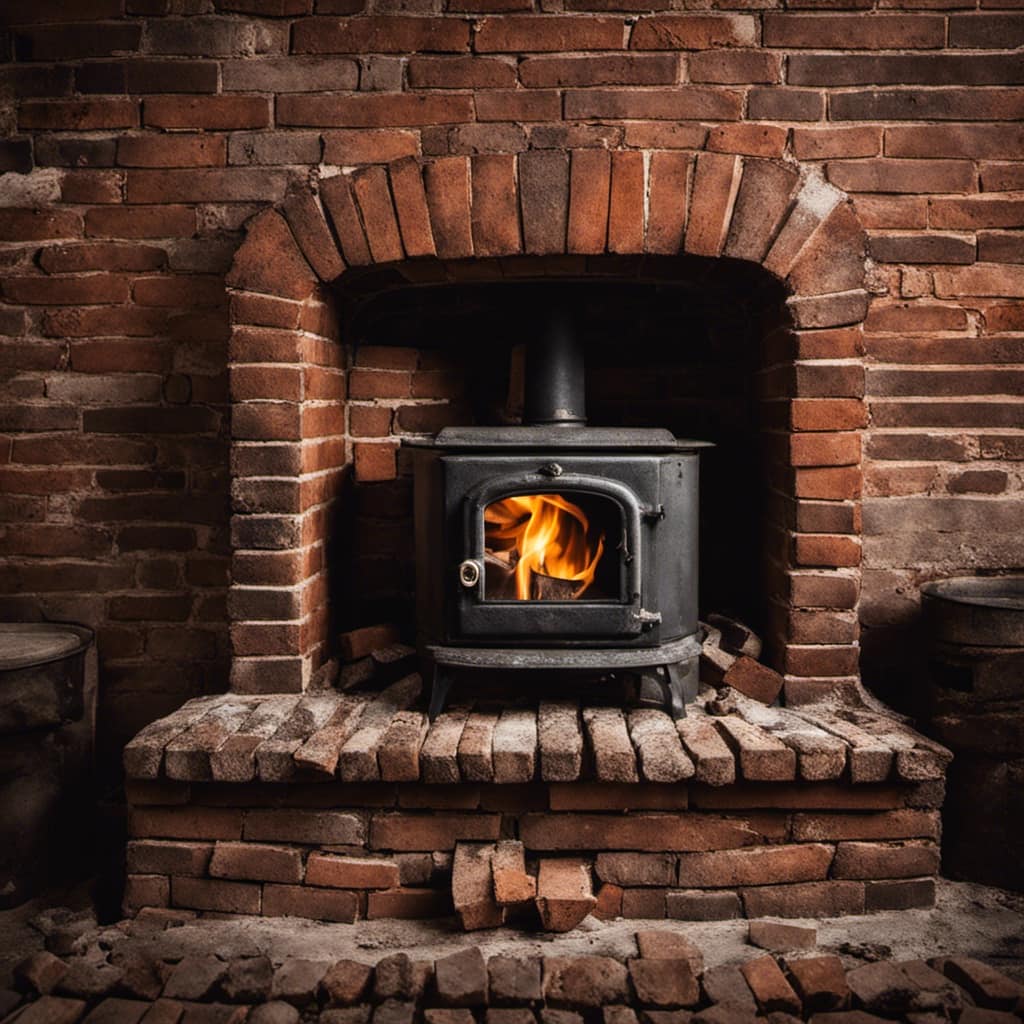
However, it’s important to note that proper maintenance, such as regular cleaning and replacement of the catalytic combustor, is crucial to ensure optimal performance and longevity of the wood stove catalytic.
Tips to Extend the Lifespan of Your Wood Stove Catalytic
To extend the lifespan of your wood stove catalytic, regularly cleaning and replacing the catalytic combustor is crucial. The catalytic combustor plays a vital role in the wood stove’s efficiency and reducing emissions. Here are some ways to increase longevity and common mistakes to avoid:
-
Clean the catalytic combustor regularly using a soft brush to remove ash and creosote buildup.
-
Avoid using low-quality or wet wood, as it can lead to excessive creosote buildup and damage the catalytic combustor.
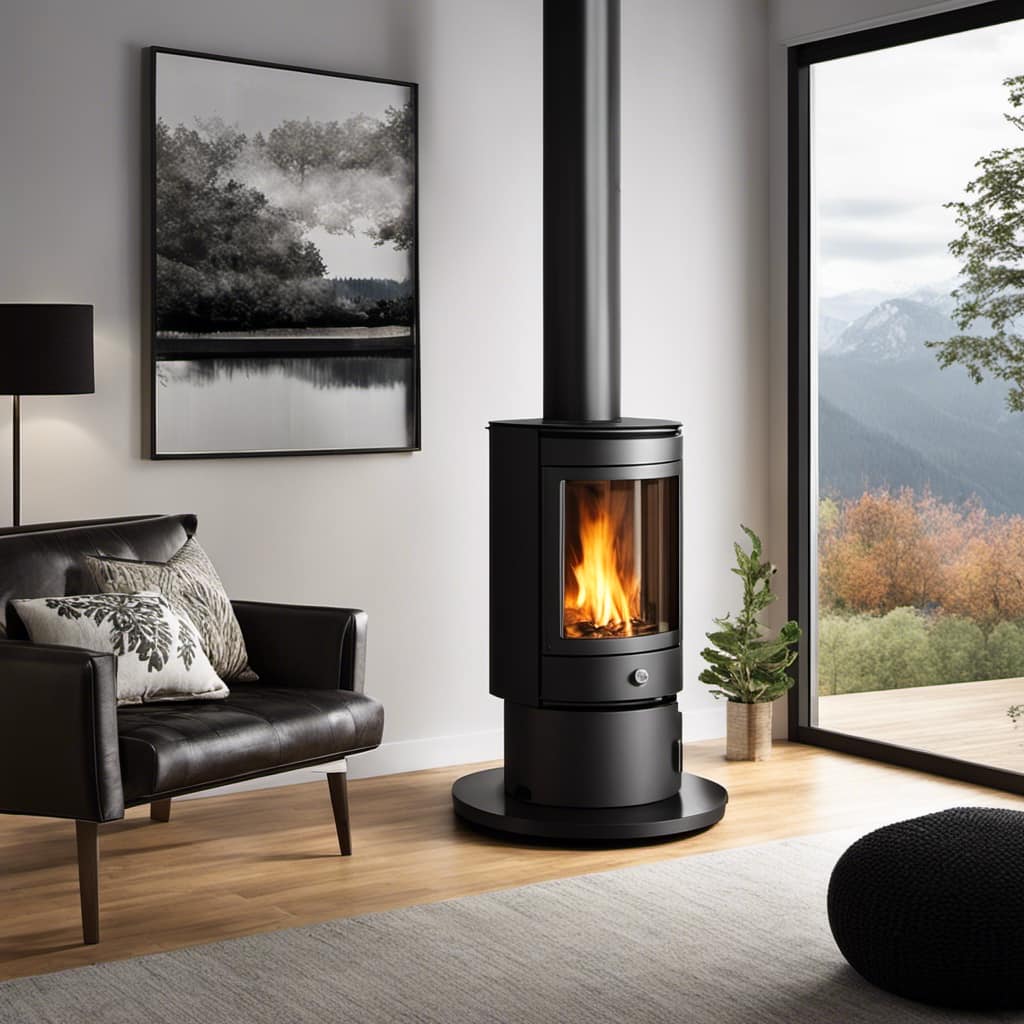
-
Monitor the temperature of the wood stove to prevent overheating, as extreme heat can cause the catalytic combustor to deteriorate.
-
Use a catalyst cleaner or rejuvenator periodically to remove any stubborn deposits on the catalytic surface.
-
Replace the catalytic combustor when it starts to show signs of deterioration, such as reduced efficiency or visible damage.
Maintenance and Care for Your Wood Stove Catalytic
I regularly clean and maintain my wood stove catalytic to ensure its optimal performance and longevity. Cleaning frequency is essential to prevent the build-up of creosote, a highly flammable substance that can lead to chimney fires.
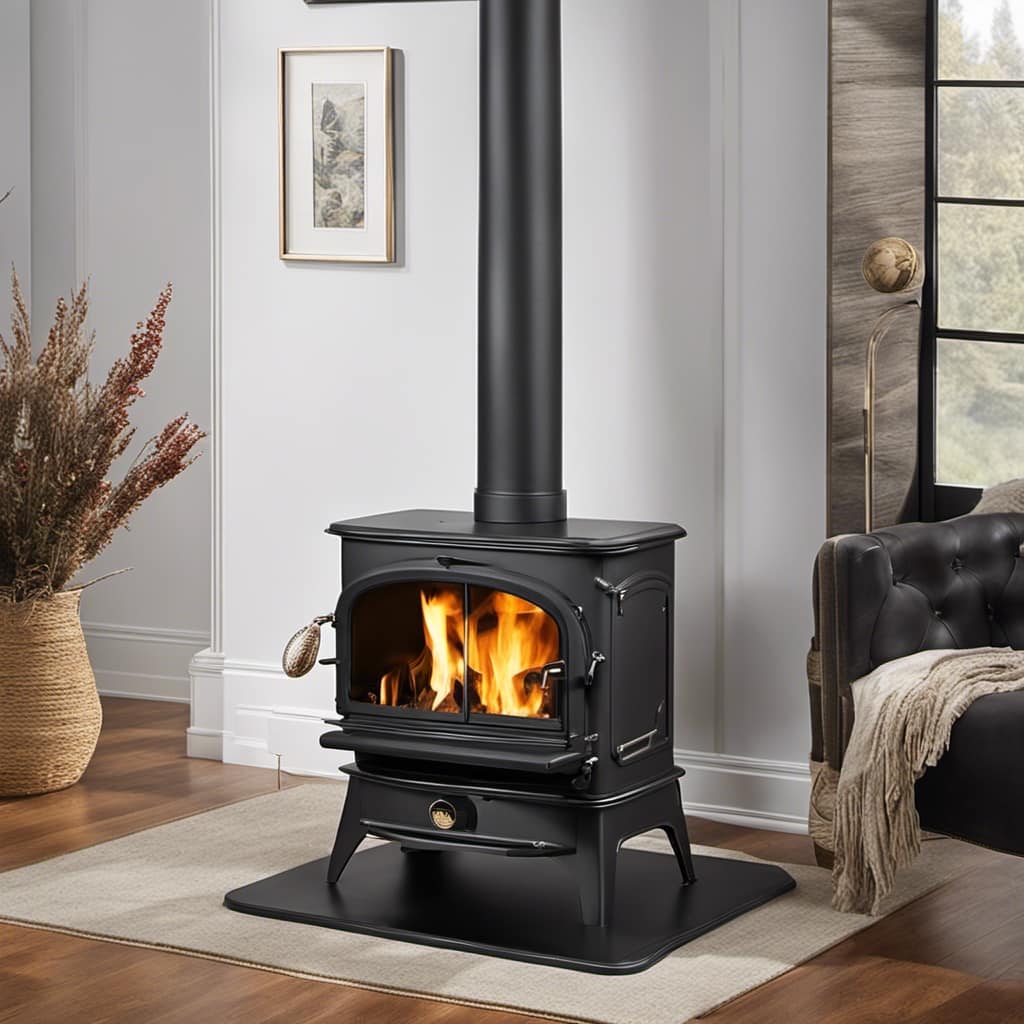
For optimal performance, I recommend cleaning the catalytic every 1-2 months during the heating season. The best cleaning method involves removing the catalytic from the stove and gently brushing off any ash or debris. A soft brush or vacuum cleaner can be used to clean the catalytic surface, ensuring that it’s free from any blockages.
It’s important to handle the catalytic with care to prevent damage. Regular cleaning not only improves efficiency but also extends the lifespan of the wood stove catalytic, ensuring safe and effective heating for years to come.
Frequently Asked Questions
Can a Wood Stove Catalytic Be Repaired if It Stops Working Properly?
If a wood stove catalytic stops working properly, it can often be repaired by troubleshooting the issue. Common problems include clogged or damaged components, which can be cleaned or replaced to restore the catalytic’s functionality.
Are There Any Warning Signs or Symptoms That Indicate a Wood Stove Catalytic Is Nearing the End of Its Lifespan?
There are several signs of a failing wood stove catalytic, such as decreased efficiency and increased smoke output. If it stops working properly, it can often be repaired by a professional.

What Are Some Common Mistakes That Can Significantly Reduce the Lifespan of a Wood Stove Catalytic?
Common mistakes, such as burning improper fuel or neglecting proper maintenance, can significantly reduce the lifespan of a wood stove catalytic. It’s important to avoid these errors to ensure optimal performance and longevity.
Is It Possible to Use a Wood Stove Catalytic for Longer Than Its Average Lifespan With Proper Maintenance?
With proper care, it is possible to use a wood stove catalytic efficiently and extend its lifespan. Regular cleaning, proper fuel selection, and regular inspection can help maximize the longevity of a wood stove catalytic.
Are There Any Environmental Factors That Can Affect the Lifespan of a Wood Stove Catalytic?
Factors affecting a wood stove catalytic’s lifespan include environmental factors. These factors, such as high humidity or exposure to corrosive substances, can impact the durability and effectiveness of the catalytic converter.
Conclusion
After learning about the factors affecting the lifespan of a wood stove catalytic, signs that indicate replacement is needed, and tips to extend its lifespan, it’s clear that taking care of this essential component is crucial.

So, how long should a wood stove catalytic last? Well, the average lifespan varies, but with proper maintenance and care, you can enjoy the warmth and efficiency it provides for many years.
Just remember, even the best things in life eventually need replacing, so keep an eye out for any signs of wear and tear.
Stay warm, my friends!
Growing up surrounded by the vast beauty of nature, Sierra was always drawn to the call of the wild. While others sought the comfort of the familiar, she ventured out, embracing the unpredictable and finding stories in the heartbeat of nature.
At the epicenter of every remarkable venture lies a dynamic team—a fusion of diverse talents, visions, and passions. The essence of Best Small Wood Stoves is crafted and refined by such a trio: Sierra, Logan, and Terra. Their collective expertise has transformed the platform into a leading authority on small wood stoves, radiating warmth and knowledge in equal measure.





